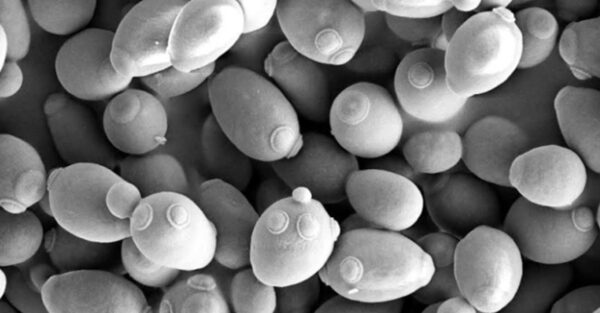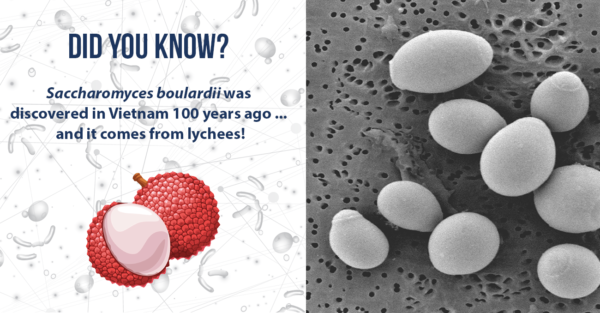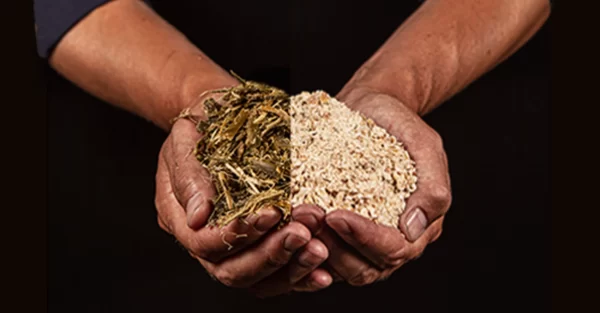Blog | Reading Time 4 minutes
Sophie Lejay, R&D Project Manager, Bacteria Process Development: “There’s always something to optimize: understanding how the bacteria strains behave and how to adapt our processes to their specificities is very exciting!”
The people behind the products: Meet Sophie Lejay, R&D Project Manager, Bacteria Process Development
Sophie is part of our R&D Product and Process Development team, based in Toulouse. Sophie oversees the development and optimization of the industrial production process of bacteria for our probiotics and silage inoculants range.
Can you introduce yourself?
I’m Sophie Lejay, and I’ve been working with the Lallemand group for 6 years, including 2,5 years with Lallemand Animal Nutrition.
I knew I wanted to study biology when I started high school. After my Baccalauréat, I studied biological engineering at the University of Technology of Compiègne and then specialized in Design and Innovation of Bioproducts for my master’s degree. It was during my internships that I discovered microbiology and fermentation, which became fields that really got my attention!
How/why did you come to work in bacteria process development?
As I said, it was really in high school that it all started: I really enjoyed biology courses. I think studying the living is interesting because it’s unpredictable! I discovered fermentation during my internships, and afterward, I looked for a job in microbiology and bioprocessing: that’s how I joined Lallemand. I have always been involved in animal nutrition projects although I started my career working with Lallemand Specialty Cultures. It was then that Mathieu Castex, the R&D Director asked me if I wanted to take part in the process and product development team with Jean-François Hupé, to develop bacteria process activities within Lallemand Animal Nutrition. So of course, I said yes! It was a nice opportunity with a lot of challenges.
What does your job consist of and what do you like about it?
I am in charge of bacteria process development: my daily job consists in developing and/or optimizing fermentation recipes for new and existing strains. I work a lot with my team at the lab scale, but I am also regularly in contact with people from production to transfer the recipes, monitor and exchange about the performances of the strains at the plant level.
What I enjoy the most is that you’re never bored. Each bacteria strain is different, each has its own particularities that will make it perform differently to the process. There’s always something to optimize: understanding how the bacteria strains behave and how to adapt our processes to their specificities is very exciting!
What I also find interesting is the fact that the bacteria will perform differently with the industrial equipment, in comparison to the lab equipment. That’s also one of our main challenges since the final goal is to produce at an industrial scale with optimal yields and quality.
What’s nice as well is that I get to travel, I went to the Milwaukee (USA) and the Malvern (UK) facilities, to really see and understand how the plants work. That allowed me to integrate as much as possible all the constraints of an industrial process, directly at lab scale. The goal is to always improve our daily processes!
To summarize, I would say that understanding and adapting the processes are what I enjoy the most about my job.
What is the most important thing to consider when producing quality bacteria?
It’s a global approach, lots of factors have to be considered! The first step is to obtain great growth at the end of fermentation! We work a lot on the fermentation recipe, especially on the ingredients we’re going to incorporate in the fermentation medium: it’s mostly nitrogen and sugar sources (and a bit of minerals), which encourage the strain’s growth. In parallel, we also review all the parameters of the process (temperature, pH, oxygen…). As I said, each strain has its specificities and needs, and by designing experiment plans, we expect to find the optimal values for each parameter.
After the fermentation come all the treatments steps (downstream process), so we go from a liquid material to a dry powder (these are called centrifugation and freeze-drying steps). This can be very stressful for a living organism! So, we also enhance the parameters of those steps in order to keep the strain alive (and therefore active) from the beginning to the end of the process. At the end of the day, we need to make sure we deliver optimal viability, stability, and efficacy of the strains for our customers.
Published Jul 1, 2021
Related articles
Need specific information?
Talk to an expert


